PDF of this article (303 KB)
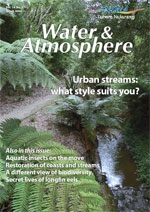
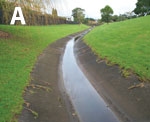
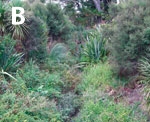
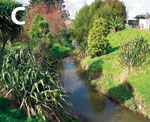
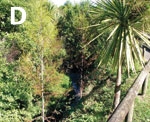


(Photos: Steph Parkyn and Andrew Jenks)
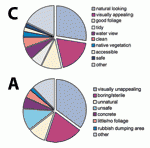

We restore streams to enhance ecology and biodiversity; but, to be most effective, restoration programmes need buy-in from the locals. Stephanie Parkyn and John Quinn have gone to the people to find out what they really, really want.
Last year the NIWA Stream Team asked over 1000 people at the Manukau Home & Garden Show in Auckland, 'Which of these streams would you like to see in your neighbourhood?' Participants in the poll ranked six photos in order of preference and wrote comments to explain their choices. This research aims to see whether stream restoration can achieve the twin goals of giving the public what they want and providing good ecological function. It is intended to help city councils with their urban planning.
Compare your taste
Take a look at photos A through F and rank which ones you like, from favourite to least favourite. (You can click them to get an enlarged view.)
The order of preference from our survey was C, E, D, F, B, A, with 36% of respondents choosing photo C as their favourite. Comments show that photo C was the most liked because it is natural looking, visually appealing, and tidy, with a clear view of the water. This photo features scattered trees with grass between, a style more consistent with 'picturesque' garden design, where nature looks tended rather than wild. However, other densely planted streamscapes – photo E and photo D (with its clearly indigenous plantings) – followed close behind (generally in the top 4 rankings) because they are natural looking with good foliage.
Photos B and A were the least liked – 63% chose A as their last choice with comments ranging from 'a horror story' to 'dreadful' to 'yuck!' These two photos represent the opposite ends of the spectrum. Those that liked photo B thought it was natural looking and environmentally good, but more people disliked it, mainly because it was too overgrown. Photo A of a concrete stream channel was considered visually unappealing and boring, but tidy and accessible by the few that did like it. Both of these streamscapes were also regarded as unsafe by those who disliked them. Photo F, with mown grass and channelised banks, got a low ranking, occurring most commonly as fifth choice, because it is unsafe and visually unappealing.
What can public preferences tell us?
From the comments and preferences of the public we came up with the following list of considerations that can be applied to stream restoration.
- Visual appeal is a strong determining factor: vegetation and a view of the water are important.
- People value walkway access along the stream.
- Safety (for children particularly) is of utmost importance to some and lack of safety barriers is often a reason for disliking a stream.
- People generally prefer tidy vegetation that is not overgrown with weeds.
- Few people mentioned habitat or ecological aspects of the streamscape, but natural appearance and native vegetation and foliage are important.
- Structured, concrete channels are generally seen as boring or sterile.
- Children want to get into the water but adults want to keep them out!
Getting past 'neat and tidy'
Ecological function is not easy to see. In urban areas, biodiversity can be seen as messy, weedy, and unkempt. On the other hand, neat, orderly landscapes can be seen as a sign of neighbourliness, hard work, and pride. Unfortunately, a neat, orderly landscape seldom enhances the ecological function of the landscape. While some researchers have associated neatness with the human desire to control or dominate the landscape, another school of thought suggests that a desire for tidiness actually demonstrates that a place is under the care of a person (see Nassauer in 'Further reading' below).
Human intentions to care
Popular perceptions can influence whether people care about restoration. People may like the idea of living in a landscape that provides wildlife habitat, but they are unlikely to change their own backyard or neighbourhood park if they believe that other people won't like it (or that house prices may be affected). Perception of human intention to care for an area may be the difference between a nature reserve and a dumping ground. From our survey, 30% of the comments about the potential for rubbish dumping concerned photo B, which was also considered untidy. Interestingly, 20% thought that photo A showed the potential for rubbish dumping, which suggests that this also gives the perception of an uncared for environment, even though it is 'tidy'.
Design cues
Something as simple as giving a name to an area can give the cue that the apparent untidiness is supposed to look like that. Design cues can draw attention to scenic views, as do the oversized picture frames used in Auckland’s regional parks. Poster boards about the benefits of biodiversity and growth of understorey vegetation could be used at key public points. Fences can also be cues that an area is cared for, although we found mixed opinion on the design of fences featured in our survey. Walkways are very important to people; while these give access to water views and to enjoy the plantings, they can also be viewed as an intention to care for this environment and to include humans in it.
Winning combination
We were encouraged to find overlap between what people like (such as healthy native vegetation, naturalness, and clean water) and features that help restore the ecological values and functions of urban streams. Adding design cues of human intention to care for the landscape, such as signs, safe walkways, and accessible places for water views, can enhance human appreciation and enjoyment, and may increase the perceived value of urban streams.
Taking in the view(s)
- By discovering what people like, stream ecologists can look for ways to enhance stream function and match aesthetic preferences.
- Tidiness can be read as indicating human concern for an area.
- Various 'design cues' can show that, although it looks wild, an area is actually cared for and under control.
Says who?
We chose the Manukau Home & Garden Show to get a broad cross section of views from a group likely to be interested in restoration of streams and riparian zones in cities. We had 1076 responses. Who were the people?
- 40 countries or ethnic groups represented
- 60% were of European descent and another 13% identified themselves as Kiwi
- 5% identified themselves as Māori or part-Māori
- 95% were from Auckland
- 67% were female
- 85% were aged 30 or over
Further reading
Nassauer, J.I. (1995). Messy ecosystems, orderly frames. Landscape Journal 14(2): 161-170.
Parkyn, S.; Wright-Stow, A.; Quinn, J. (2003). Photo survey: do people like riparian management on farm streams? Water & Atmosphere 11(4): 20-21.
Dr Stephanie Parkyn and Dr John Quinn are freshwater ecologists based at NIWA in Hamilton.
Teachers’ resource for NCEA AS: Geography 90206 (1.5), 90335 (2.5), 90705 (3.5). See other curriculum connections at www.niwa.co.nz/pubs/wa/resources
